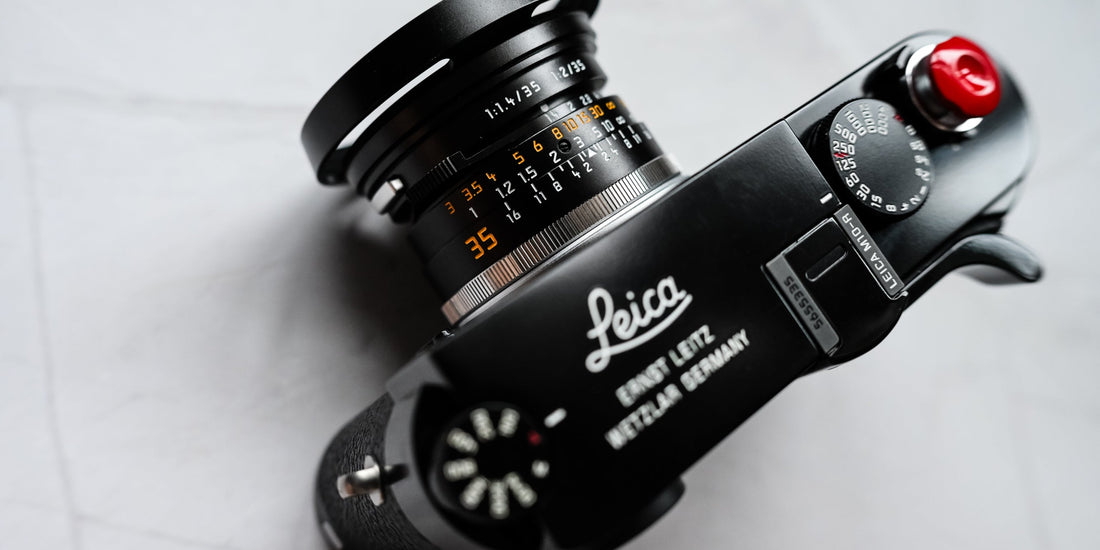
Artizlab Classic 35mm F1.4 Lens Review – a modern refresh of a Leica classic.
Share
Introduction
Available January 2025, the Funleader Classic 35mm ƒ1.4 lens made by Artizlab seeks to blend the vintage design of Leica’s classics with modern optical designs at an affordable price.
In an increasingly crowded arena of competent third-party manufacturers from the entry-level TTArtisan to the higher-end Light Lens Lab, Voigtlander, this len’s fast ƒ1.4 aperture and 35mm focal length seeks to be the go-to tool for street photography and creative storytelling. Will the Artizlab Classic 35mm ƒ1.4 live up to the hype?
Let’s dive in. 
About Artizlab and why the Classic 35mm ƒ1.4 M mount
New to many of us, I had reached out to Artizlab seeking more information on who they are, and I am very glad to share their self-introduction.
Artizlab is founded by a group of Leica collectors and photography enthusiasts, and in this turn, the designer of the Classic 35mm ƒ1.4 lens in collaboration with Funleader.
In today’s world, where Leica remains an icon in the world of photography, Artizlab seeks to bridge the gap of accessibility (and affordability) by drawing inspiration from Leica’s time-tested designs, honouring Leica’s design while meeting the needs of today’s photographers with modern optical designs.
The Classic 35mmƒ1.4 is inspired by the 1960s Leica Summilux-M 35mm ƒ1.4 version 2 lens.
According to Artizlab, the Classic 35mmƒ1.4 retains the predecessor’s timeless design while integrating modern optical design for enhanced performance, notably in these 3 areas:
a. Reduced lens flare through improved lens coatings.
b. Enhanced resolution to work better with modern digital sensors.
c. While working to retain the characteristics in the drawing of the original Leica Summilux-M 35mm ƒ1.4 v2.
Technical Specifications
- 35mm focal length manual focus for full-frame Leica M-mount
- Optical design of 8 elements in 6 groups, with a minimum focusing distance of 1 meter (3.28 ft)
- 10 aperture bladed design
- ƒ1.4 to ƒ16
- Flange distance of 27.8 mm and viewing angle of 62°
- 52mm x 28mm (without hood) 64mm x 44mm (with hood) at 157 grams without front/back caps.
- Comes out of the box rangefinder calibrated with an included Leica 12504 inspired hood and the drop-in UV filter.
Build and Handling
To focus on two likely asked questions, firstly, the Artizlab Classic 35mmƒ1.4 is constructed out of aluminium and copper, not the usual brass some Leica aficionados are fond of.
This said the build of the Artizlab Classic 35mmƒ1.4 is still very decent. There is no flex, and the lens is built to have tight tolerances (everything is firm and tight). A close comparison is that the build quality is quite close to the Voigtlander 35mm F1.5 Aspherical I reviewed here.
In case one is mistaken, the optical design of the Classic 35mmƒ1.4 is not the same as the 1960s Leica Summilux-M 35mm ƒ1.4 v2.
|
Artizlab Classic 35mmƒ1.4 |
Leica Summilux-M 35mm ƒ1.4 v2. |
|
8 elements in 6 groups |
7 elements in 5 groups |
|
1 meter minimum focusing distance |
1 meter minimum focusing distance |
|
Modern Multi-coated |
Single-coated |
|
Infinity lock on focusing tab |
No infinity lock, with focusing tab |
|
157 grams |
195 grams |
|
Inspired Serie VII filter and 12504 hood |
Original Serie VII filter in 12504 hood |
One of the characteristics of the Artizlab Classic 35mmƒ1.4 that I enjoyed the most was how compact it is for an ƒ1.4 lens. Many modern variants are easily double the size of the Artizlab, though, in all fairness, these lenses may sport more complex optical designs.
In my humble opinion, the infinity lock on the focusing tab is either a ‘one loves it’ or ‘one hates it’ experience. I can live without an infinity lock, but I find it tolerable.

Initially, the focusing ring felt stiff, but this issue was resolved as I used the lens more. Another issue which is also present with the original Leica Summilux-M 35mm ƒ1.4 v2 is that due to the very small gap between the hood attachment section and the aperture ring, one might experience a bit of discomfort changing aperture values until muscle memory sets in.

Otherwise, if you have previously handled a lens on the Leica M rangefinder, everything will come to you as very familiar, with little to no learning curve required.
I have seen a handful of users using the Artizlab Classic 35mm ƒ1.4 on non-Leica-M bodies, and it is even easier to grab focus due to the large LCD/EVD and focus-peaking one can take advantage of.
Performance
To cut to the chase, I will surmise the Artizlab Classic 35mmƒ1.4 to be more of a character lens.
This lens will hardly be suitable for those who expect clinically perfect (or close to) output like what you can find in the USD8495 Leica APO Summicron 35mm lens, which, by the way, will allow you to purchase approximately 17 copies of the Artizlab Classic 35mm ƒ1.4.

The quality and character of bokeh surprised me, given that the Artizlab Classic 35mmƒ1.4 is a lens costing below USD500. Below are some samples going from ƒ1.4, ƒ2, ƒ2.8 to ƒ5.6. Click on the arrows to shift to the corresponding sample across the apertures.
One can observe that while the Artizlab Classic 35mmƒ1.4 is slightly softer wide open, there is still a decent amount of details captured. I find the output sharp enough from ƒ2 onwards, with ƒ2.8 being a sweet spot for the type of photography I do, especially for street photography.
Maybe the possiblity of a Leica steel-rim look too?
An interesting phenomenon is that high-contrast scenes photographed wide open have a higher tendency to introduce a ‘glow’ to the image like the one above. I have tried to reproduce this look on a more consistent basis but have met with mixed results.
Conclusions
The Artizlab Classic 35mm ƒ1.4 is an interesting lens to use, and I can say that Artizlab did a competent release with their first lens for Leica M mount. The team has got the aesthetics and cosmetics of the lens right, creating a lens that is ‘heavily’ inspired by the original 1960s Leica Summilux-M 35mm ƒ1.4 version 2.

The lens’s build and optical output quality are a pleasant surprise, making the Artizlab Classic 35mm ƒ1.4 a compelling choice, especially given its sub-USD500 price point.
In a way, while it is true that there are no similarities optical design-wise between the 2025 and 1960s versions, there is nothing to complain about given that the Artizlab Classic 35mm ƒ1.4 is a lens that I will use wide-open. Most users will work well with it once they understand its strengths and accept its weaknesses.
The original post can be found here
